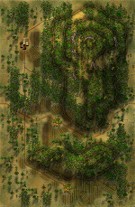|
|
|
Total |
| Side 1 |
0 |
| Draw |
0 |
| Side 2 |
0 |
|
Total |
| Side 1 |
0 |
| Draw |
0 |
| Side 2 |
0 |
|
Total |
| Side 1 |
0 |
| Draw |
0 |
| Side 2 |
0 |
|
| Overall Rating, 0 votes |
|---|
|
|
|
Scenario Rank:
of |
| Parent Game |
Ancient Armor |
| Historicity |
Alt-History |
| Date |
1941-12-14 |
| Start Time |
07:00 |
| Turn Count |
36 |
| Visibility |
Day |
| Counters |
84 |
| Net Morale |
1 |
| Net Initiative |
2 |
| Maps |
2: 82, 83 |
| Layout Dimensions |
56 x 43 cm
22 x 17 in |
| Play Bounty |
229 |
| AAR Bounty |
222 |
| Total Plays |
0 |
| Total AARs |
0 |
|
Introduction
|
|
Once the mobile phase of the battle came to a close, the lumbering American armor – should it somehow survive that mobile phase of the battle – could make its weight felt. Against an enemy infantry force without tanks of its own, the ancient armor might be, possibly, better than no armor at all.
|
|
Conclusion
|
|
Against an immobile enemy in fixed positions, the Liberty tanks could show their worth – as long as they stayed away from enemy anti-tank guns. Or enemy infantry chasing after them and attacking them bare-handed. And if they didn’t break down. But apart from all that, they were fearsome engines of war.
|
|
Additional Notes
|
|
Errata: The Marines also get 1 Captain and 1 Lieutenant drawn from the Saipan mix. |
Display Relevant AFV Rules
| AFV Rules Pertaining to this Scenario's Order of Battle |
- Vulnerable to results on the Assault Combat Chart (7.25, 7.63, ACC), and may be attacked by Anti-Tank fire (11.2, DFT). Anti-Tank fire only affects the individual unit fired upon (7.62, 11.0).
- AFV's are activated by tank leaders (3.2, 3.3, 5.42, 6.8).
They may also be activated as part of an initial activating stack, but if activated in this way would need a tank
leader in order to carry out combat movement.
- AFV's do not block Direct Fire (10.1).
- Full-strength AFV's with "armor efficiency" may make two anti-tank (AT) fire attacks per turn
(either in their action segment or during opportunity fire) if they have AT fire values of 0 or more
(11.2).
- Each unit with an AT fire value of 2 or more may fire at targets at a distance of between 100% and 150% of its
printed AT range. It does so at half its AT fire value. (11.3)
- Efficient and non-efficient AFV's may conduct two opportunity fires per turn if using direct fire
(7.44, 7.64).
Units with both Direct and AT Fire values may use either type of fire in the same turn as their opportunity fire,
but not both (7.22, 13.0).
Units which can take opportunity fire twice per turn do not have to target the same unit both times (13.0).
- Demoralized AFV's are not required to flee from units that do not have AT fire values (14.3).
- Place a Wreck marker when an AFV is eliminated in a bridge or town hex (16.3).
- AFV's do not benefit from Entrenchments (16.42).
- AFV's may Dig In (16.2).
- Closed-top AFV's: Immune to M, M1 and M2 results on Direct and Bombardment Fire Tables. Do not take step losses from Direct or Bombardment Fire. If X or #X result on Fire Table, make M morale check instead (7.25, 7.41, 7.61, BT, DFT).
- Closed-top AFV's: Provide the +1 modifier on the Assault Table when combined with infantry. (Modifier only applies to Germans in all scenarios; Soviet Guards in scenarios taking place after 1942; Polish, US and Commonwealth in scenarios taking place after 1943.) (ACC)
- Tank: all are closed-top and provide the +1 Assault bonus, when applicable
- APC – Armored Personnel Carrier: These are Combat Units, but stack like Transports. They can transport personnel units or towed units. They are not counted as combat units for the +1 stacking modifier on the Direct Fire and Bombardment Tables (4.4). They may be activated by regular leaders and tank leaders (1.2, 3.34, 4.3, 5.43). They do not provide the +1 Assault bonus (ACC).
|
United States Order of Battle


 AArm003
AArm003 



























